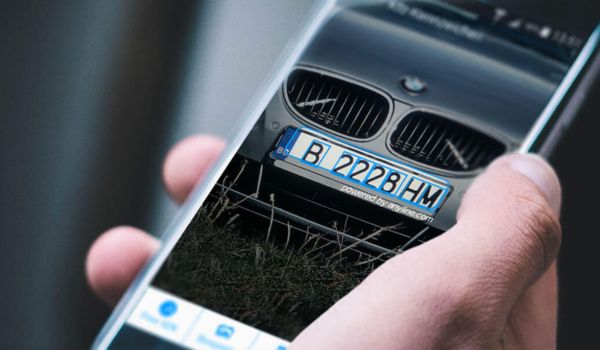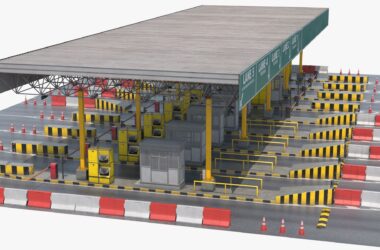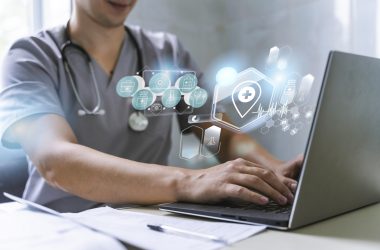About 70% of police officers in the United States use license plate readers to solve crimes related to stolen vehicles and wanted individuals. These devices allow police officers to scan hundreds of plates within a matter of minutes. This is much more efficient than manually checking each vehicle for stolen or wanted status. Given the necessity of quick and accurate plate recognition, it’s natural to wonder how do these automated license plate readers work. Let’s see how license plate readers are used by police and gain an understanding of their interesting world.
What Are Automated License Plate Readers?
A automated license plate readers or a automated license plate reader (LPR) is an automated system that captures plate images of a moving vehicle. The images of the plates are then processed by software that extracts the text from the image. It is then sent to a database for further analysis.
LPRs can scan millions of plates instantly. This helps locate stolen cars and vehicles associated with wanted individuals, potentially preventing crimes and apprehending suspects.
Components of LPRs
- High-resolution Cameras – Strategically positioned cameras capture images of license plates.
- Optical Character Recognition (OCR) Software – The image is further analyzed using OCR software, which identifies and extracts the text from the image.
- Databases – The system securely stores pertinent data, including vehicle registration details, stolen vehicle records, and toll payments.
Functionality of LPRs
- Image Capture – The cameras snap a photo of the plate as the vehicle drives past.
- OCR Processing – The OCR software translates the visual characters on the plate into digital text.
- Database Comparison – The extracted information is compared against relevant databases.
Real-time Processing and Alerts – Modern systems operate in real-time, generating immediate alerts if a match is found in a database, triggering appropriate actions.
What Are Automated License Plate Readers Used For?
The function of license plate readers is to capture data from LPR systems, typically stored in secure databases maintained by the organization. It is only accessible to law enforcement agencies because the data gathered is used for crime investigations or to find stolen cars.
It’s also used in traffic management, where vehicles with expired registrations or outstanding warrants are identified through license plate readers. LPRs are used in toll systems as well to read the plates and generate electronic toll transactions.
It also works in border security, which involves checking vehicles entering and leaving the country by comparing the plates with watchlists for security purposes. Overall, LPR offers a valuable tool for various applications when used responsibly and ethically.
How Do Police Use Automated License Plate Readers?
The LPR system has become a prominent tool in contemporary law enforcement. It captures and interprets vehicle license plates, transforming them into valuable data for various investigative and security purposes. Let’s explore how police use this technology:
- Identifying Stolen Vehicles
One of the primary applications is that police can quickly locate stolen cars, which helps in recovery and catching criminals.
- Crime Investigation
Law enforcement agencies use the data gathered from a plate for criminal investigation. It helps track suspects’ movements, identify potential accomplices, and gather evidence to build stronger cases.
- Apprehending Wanted Criminals
Police use ALPR software to identify vehicles linked to individuals with outstanding warrants or those suspected of involvement in criminal activity. It generates real-time alerts.
- Traffic Enforcement
These readers work with traffic flow management as well. It helps police identify vehicles with expired registrations or outstanding traffic violations and gives them the upper hand to take actions like issuing citations or impounding vehicles.
- Border Security
These systems let police monitor every vehicle entering and exiting the country. It helps keep track of potential security threats, such as stolen cars, illegal goods, or wanted individuals.
Real-Life Examples of Automated License Plate Readers
These readers have found diverse applications across various sectors. Here are real-life examples showcasing their impact:
- Daylight Burglaries
In Fayette County, Georgia, the police tried to solve many daylight burglaries where pillowcases and valuables were stolen. They called the thief the “Pillowcase Bandit.” A witness got a license plate number, and with ALPR, they found where the car’s owner lived. It helped them catch Christopher Bergeron, the bandit.
- Shootings Across Kansas City Highways
Similarly, a man named Mohammed Pedro Whitaker was charged with shootings that happened across Kansas City highways. ALPR caught the license plate of the car he used multiple times. A witness remembered the plate, and the police used ALPR photos to find Whitaker and link him to the attacks.
- Vehicle Thefts and Break-ins
In another case, the Doral Police Department in Doral, State, noticed most crimes were committed by people who didn’t live there. They started using license plate readers (ALPR systems) to get leads on cases and understand crime patterns.
One time, they checked a car’s license plate in a Walmart lot and found out it was linked to vehicle thefts and break-ins. This led to the arrest and uncovering of a youth gang called the 400 Boys, which solved more cases.
Is It Safe to Use Automatic License Plate Recognition Software?
Given the privacy and security concerns, one should ask if it’s safe to use an ALPR system. While overall a safe and secure system used by law enforcement, here are the general concerns raised by the public:
- Biased algorithms or profiling based on plate data could lead to unfair targeting of certain groups or individuals.
- Widespread use by the police creates a vast surveillance network, potentially leading to abuse and chilling effects on public freedoms.
- Concerns exist about how long data is stored, who has access, and the potential for unauthorized use or breaches.
The primary concern is the potential misuse of collected information. Let’s clear up the concerns and see how safe license plate readers are for the public. Here’s how this technology keeps the public data safe:
Data Encryption – ALPR software encrypts data to prevent unauthorized access to sensitive information.
Access Controls – It has strict access controls; only authorized personnel can view or use the collected data.
Data Retention Policies – The system has a predefined data retention period, after which the data is automatically deleted from the database. It ensures that outdated information is not stored for an extended period.
Auditing and Monitoring – Activity logs are maintained to track data access and usage, providing accountability and transparency in the system’s operations.
Legal Compliance – ALPR systems operate by legal regulations, ensuring they adhere to the privacy laws and guidelines set forth by jurisdictions.
Regular Software Updates – The software is regularly updated to address vulnerabilities and enhance security measures.
Public Awareness – Agencies are increasingly promoting transparency by educating the public on the use and governance of ALPR technology to foster community trust.
Ethical Use Policy – Many organizations implement an ethical use policy to guide the application of ALPR technology, ensuring it is used strictly for its intended purposes and minimizing the scope for abuse.
Folio3 AI’s Work With License Plate Readers
When law enforcement and public safety use these readers ethically and responsibly, they can become a powerful tool.
Folio3 AI provides state-of-the-art ALPR systems that adhere to strict ethical guidelines and privacy laws.
Here’s how our ALPR technology can help you stay safe and use license plate readers efficiently:
- 99.5% accuracy in various lighting and weather conditions.
- Can analyze video streams and images in real time.
- Identifies alphanumeric characters from various countries and regions.
- Integrates with existing security systems and software through APIs and SDKs.
- Options for customizable features and functionalities.
Our team of experts has designed the technology to enhance efficiency and accuracy while upholding individual rights. With regular software updates, comprehensive data encryption, and robust access controls, our license plate readers provide a secure and reliable solution for your organization’s needs.
Don’t compromise on privacy and ethical standards when it comes to ALPR technology. Choose Folio3 AI Today for a responsible and effective solution.

Dawood is a digital marketing pro and AI/ML enthusiast. His blogs on Folio3 AI are a blend of marketing and tech brilliance. Dawood’s knack for making AI engaging for users sets his content apart, offering a unique and insightful take on the dynamic intersection of marketing and cutting-edge technology.










